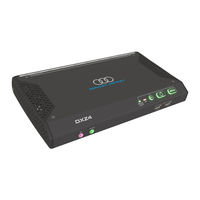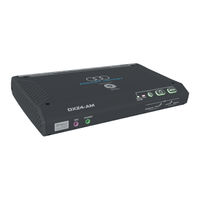Amulet Hotkey DXZ4-AM Manuals
Manuals and User Guides for Amulet Hotkey DXZ4-AM. We have 2 Amulet Hotkey DXZ4-AM manuals available for free PDF download: User Manual
Amulet Hotkey DXZ4-AM User Manual (52 pages)
Brand: Amulet Hotkey
|
Category: Server
|
Size: 12 MB
Table of Contents
Advertisement
Amulet Hotkey DXZ4-AM User Manual (44 pages)
DXZ4 Series security edition zero client
Brand: Amulet Hotkey
|
Category: Server
|
Size: 7 MB
Table of Contents
Advertisement

